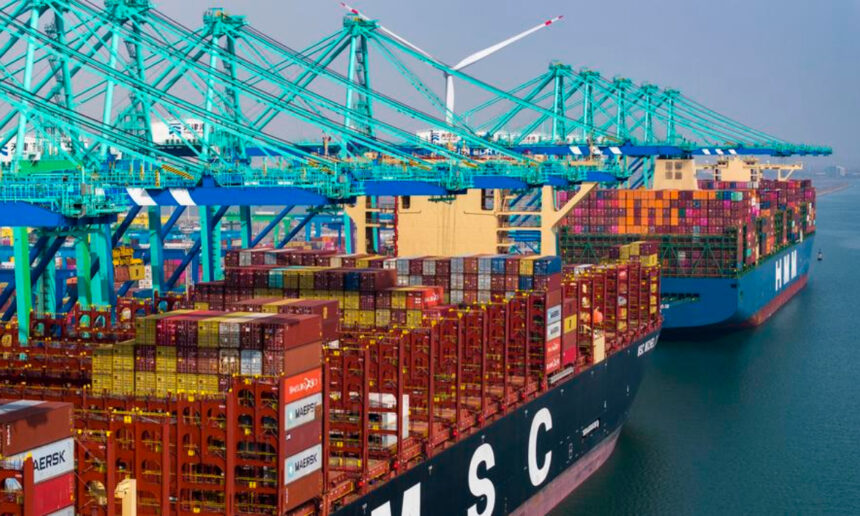By Chen Jihong
The US Trade Representative’s so-called Section 301 investigation and related restrictions on China’s maritime, logistics and shipbuilding sectors are expected to trigger a chain reaction that could worsen inflation in the US and threaten the fundamental stability of global supply chains.
These added costs will be passed through the supply chain to US importers and consumers. The resulting fees and restrictions will worsen congestion at major US ports, increasing pressure on logistics systems and triggering widespread disruption. These domino effect will ultimately undermine the US and weaken the resilience of global supply chains.
The supply of consumer goods in the US market depends heavily on container shipping. If the US imposes high port fees, global shipping companies will raise freight rates, and these costs will inevitably be passed on to US importers and further transmitted to end consumers, leading to a comprehensive rise in commodity prices and placing a greater financial burden on American households.
IMF analysis shows that shipping costs are a key driver of global inflation, with doubling freight rate estimated to cause a 0.7 percentage point rise in inflation. This comes as US inflation has escalated, with the Consumer Prices Index (CPI) for all items rising 2.9 percent from December 2023 to December 2024, according to data from the US Bureau of Labor Statistics. Additional port fees will likely intensify inflation pressures and risks.
The World Shipping Council (WSC) warns that the US’ fees act as a disguised additional tax that would raise the prices of imported goods, worsening inflation and potentially harming US seaborne trade, as well as industries and job markets dependent on exports.
Furthermore, US restrictions will prompt shipping companies to adjust their capacities. The rise in port fees will force US shipping companies to reduce their frequency of port calls or exit the market, leading to a structural shortage of shipping capacity and causing freight rates to rise. Certain research shows that a 1 percent reduction in capacity can result in a 2-5 percent increase in freight costs. These increased rates will ultimately be passed on to US importers and consumers.
On the other hand, if the US raises sport fees, shipping companies will prioritize larger ports with greater unloading capacity to reduce unit costs, leading to congestion at key hubs. Throughput at major ports like Los Angeles and Long Beach could surge by 30 to 50 percent, exceeding infrastructure capacity, creating bottlenecks, reducing terminal efficiency, increasing ship dwell times, which will sharply increase overall supply chain costs.
The US relies heavily on Overland Common Point (OCP) and Inland Point Intermodal (IPI) models, which depend on seamless connections between ports and land transport. Once the ports are paralyzed, the turnover cycle for goods and the distance for land transport will inevitably lengthen. For low-value goods such as furniture and agricultural products, logistics costs may exceed the breakeven point.
The US logistics network is already strained, and if it encounters this additional shock, it will inevitably lead to blockages in supply chain operations and rising costs, significantly increasing market uncertainty and impacting commercial investment and the overall operational efficiency of the US supply chain.
The negative chain reaction of the US move will continue to amplify, impacting the safety and stability of global supply chains. Disruptions in the US logistics network will ripple across global systems, weakening resilience and compromising supply chain security.
Over the medium to long term, this negative chain reaction may continue to amplify, forcing longer transportation cycles, significantly increasing supply chain volatility, and a potential domino-like decline of the global logistics network.
As a medium to long-term strategy, global shipping giants may establish “parallel fleets” globally, readjusting vessel deployment plans on global shipping routes, severing the global maritime supply chain from the US route networks. This fragmentation of the maritime supply chain will raise scheduling complexity and costs, increasing the risk of widespread disruptions.
Ultimately, the US’ short-sighted protectionist policies are bound to backfire, inflicting more harm than benefit on the US itself.

Chen Jihong, director of Shenzhen International Maritime Institute Photo: courtesy of Chen Jihong
The author is director of Shenzhen International Maritime Institute. bizopinion@globaltimes.com.cn













